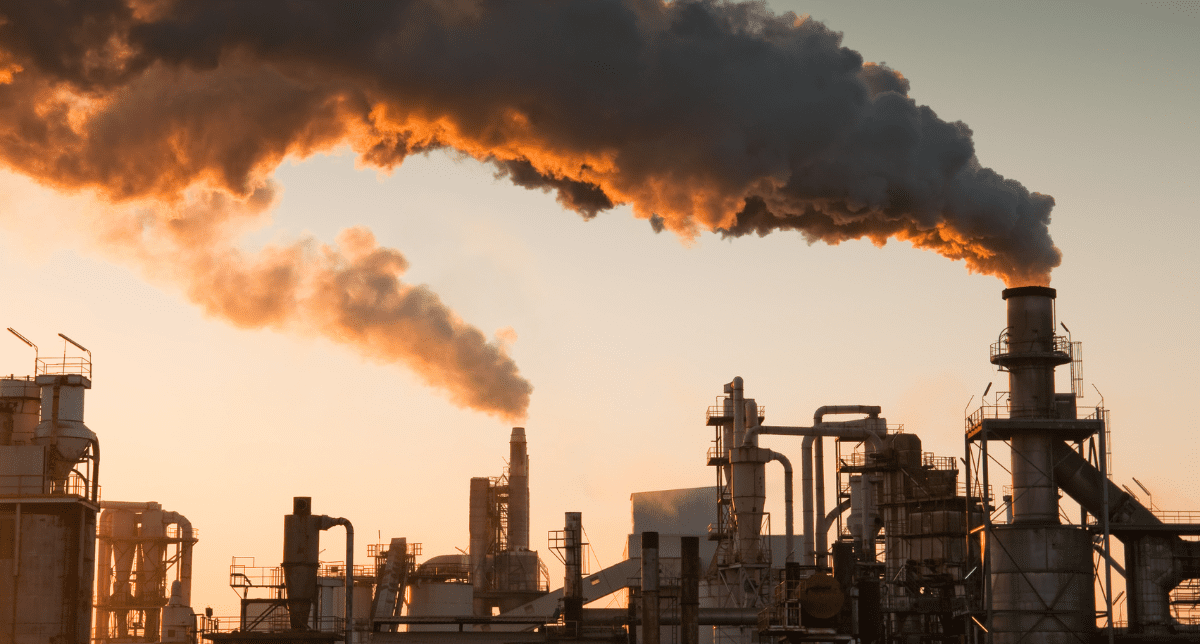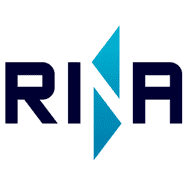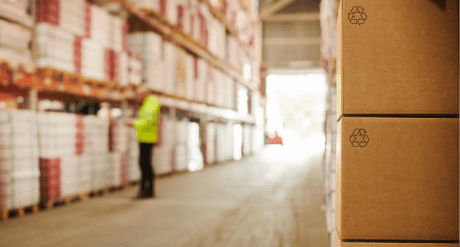
European Commission Adopts New F-gas Regulation

This blog was originally posted on 20th March, 2024. Further regulatory developments may have occurred after publication. To keep up-to-date with the latest compliance news, sign up to our newsletter.
AUTHORED BY TONY LORD, SENIOR REGULATORY CONSULTANT, RINA
Introduction
F-gases are fluorinated greenhouse gases that include hydrofluorocarbons (HFCs), hydrochlorofluorocarbons (HCFCs), perfluorocarbons (PFCs), sulphur hexafluoride (SF6), fluorinated ethers and alcohols.
In the EU, the production and use of F-gases are controlled under Regulation (EU) 517/2014. However, the adoption of this law predated the EU’s ratification of the Kigali Amendment to the Montreal Protocol (which seeks to gradually reduce HFC use by 80-85% by the late 2040s) and the European Green Deal (a set of European Commission policy initiatives that aim to make the EU climate neutral by 2050). Revision of the 2014 Regulation was required to align with new obligations introduced under both Kigali and the Green Deal.
Regulation (EU) 2024/573 was adopted as the EU legislative revision on 7th February 2024. It enters force on 11th March 2024 and repeals Regulation (EU) 517/2014. In this blog, we examine the new F-gas regulation, Regulation (EU) 2024/573.
Scope of Regulation (EU) 2024/573
The rules discussed below vary according to F-gas (e.g., HFC, HCFC, PFC). Regulation (EU) 2024/573 subjects 23 additional F-gases to its controls. It also clarifies and strengthens rules on F-gas production, use, recovery, recycling and destruction as well as certification and training. Similarly, it strengthens conditions on the import, export and placing on the market of F-gases, and equipment (including parts thereof) containing F-gases or whose functioning relies upon those gases.
Products and Equipment Subject to Placing on the Market Prohibitions
The following products and equipment have been added to the market prohibition list.
- From 2025, refrigerators and freezers for commercial use that contain F-gases with a GWP of 150 or more.
- From 2025, personal care products and equipment used for cooling the skin containing F-gases with GWP of 150 or more, except if used for medical applications.
- From 2025, fire protection equipment except when required to meet site safety requirements.
- From 2026, domestic refrigerators and freezers and self-contained refrigeration equipment, except chillers.
- From 2027 through to 2030, stationary chillers of various types.
- From 2027 through to 2033, self-contained and split air-conditioning equipment and heat pumps of various types.
- From 2030, technical aerosols except if required to meet safety standards or in medical applications.
- From 2033, foams except if required to meet safety requirements.
Creation of an F-gas Portal
An F-gas Portal will be set up by the European Commission to manage quotas for the placing on the market of HFCs, registration of undertakings and reporting of all F-gases and equipment. From 3rd March 2025, the Portal will connect with the EU Single Window Environment for Customs. A valid registration in the F-gas Portal is required for the following:
- The import or export of F-gases, and products and equipment containing F-gases.
- Submitting requests and receiving production rights for the placing on the market of HFCs.
- Supplying or receiving HFCs for allowed purposes outside of the quota system.
- Reporting requirements and submission of verification reports from independent auditors.
Additional Measures to Reduce Production and Consumption
By 1st June 2024, 1st April 2027 and at least every 3 years thereafter, producers and importers (established within the EU and that produced HFCs in 2022) may request quota allocations for HFCs via the F-gas Portal. They may (subject to approval) transfer production and use rights between themselves within a Member State and so combine production rights with a producer outside of the EU. Exemptions apply, for example, the supply directly from a producer or importer to a semiconductor manufacturer. By 31st December 2024 and every year thereafter, production rights will be allocated via the F-gas Portal. This is contingent upon EU implementing legislation being enacted before 1st January 2025. Until then, producers may continue to produce HFCs without production rights. HFCs production will be phased down to 15% (of the average production between the years 2011 to 2013) from 2036. Consumption of HFCs will be phased out by 2050.
Recovered F-gases listed in Annex I and Annex II section 1 of the new regulation must not be used unless they have been recycled or reclaimed. The use of F-gases, with a GWP of 2500, is prohibited as follows:
- From 2025, for the maintenance or servicing of any refrigeration equipment.
- From 2026, those listed in Annex I, for maintenance or servicing of air-conditioning and heat pumps.
- From 2032, the use of F-gases listed in Annex I, with a GWP of 750 or more, for the maintenance or servicing of stationary refrigeration equipment, with the exclusion of chillers.
- From 2035, SF6 for maintenance or servicing of electrical switchgear equipment unless it is reclaimed or recycled, except if it is proved that use of reclaimed or recycled SF6 is not possible.
Use of F-gases in electrical switchgear is prohibited (unless specific exemption requirements are met) as follows:
- From 2026, electrical switchgear up to and including 24 kV.
- From 2028, switchgear from 52 kV up to and including 145 kV and up to and including 50 kA short circuit current,
with a GWP of 1 or more. - From 2030, electrical switchgear of more than 24 kV up to and including 52 kV.
- From 2032 for high-voltage switchgear (>52kV).
The exemption of HFCs for metered dose inhalers under the existing, 2014 EU F-Gas Regulation is removed from 1st January 2025. However, the European Commission may grant an exemption for 4 years if no alternatives exist.
From 1st January 2025, rules apply to building owners and contractors on foam panels and laminated boards.
From 11th March 2024, refillable containers must have a declaration of conformity (retained for at least 5 years) that includes evidence of a binding arrangement for their return for refilling.
Controls on Imports and Exports
Imports and exports of HFCs between countries not signatories to the Montreal Protocol or associated products and equipment that use HFCs is prohibited from 1st January 2028. From 12th March 2025, the export of foams, technical aerosols, stationary refrigeration and stationary air-conditioning equipment and stationary heat pumps listed in Annex IV of the 2024 Regulation that contain, or whose functioning relies upon, F-gases with a GWP of 1000 is prohibited.
Reporting Obligations
These apply to the import, export, production (including by-products) or destruction of F-gases from 31st March 2024 and every year thereafter. F-gases with exempted uses are also subject to data reporting requirements. Records must be kept for at least 5 years. From 30th April 2025, importers of pre-charged equipment containing at least 1,000 tonnes CO2 equivalent HFCs must provide third-party verification of documentation for the preceding calendar year. Collection of leakage data is also required. Reporting rules under the existing EU F-Gas Regulation will continue to apply for the reporting period from 1st January 2023 to 31st December 2023.
Labeling Requirements
From 1st January 2025, products and equipment must be labeled in accordance with the new regulation. The rules currently in force under the existing, 2014 F-Gas Regulation will continue to apply until 31st December 2024.
Tighter Controls on Leaks
The threshold for leak checking is reduced from equipment containing 500 tonnes CO2 equivalent to 5 tonnes. Leak checks are required on hermetically sealed equipment containing 10 tonnes or more CO2 equivalent, or more than 2 kilograms of F-gas and for residential buildings equipment containing 3 kg or more F-gas. Rules apply to electrical switchgear containing 6 kilograms of F-gas or more. Leak checks must also be carried out on mobile equipment defined as those used in trucks and train wagons, heavy duty vehicles, vans, trams, aircraft, agriculture and construction and mining equipment.
Training Requirements
The European Commission will establish, by 12th March 2026, requirements for training and certification programmes. By 11th March 2027, Member States must establish or adapt certification programs for personnel carrying out installation, maintenance, servicing or repair and decommissioning, leak checks and recovery for F-gases and alternatives. By 12th March 2027, refresher training will become mandatory at least every 7 years. Existing training certificates will remain valid.
Extended Producer Responsibility Schemes
By 31st December 2027, EU Member States must ensure that producers of F-gases in products and equipment subject to Directive 2012/19/EU (on Waste Electrical and Electronic Equipment) finance the collection, treatment, recovery and destruction of those F-gases. It is advised that undertakings become members of producer responsibility organizations that are active in all Member States where electrical products are placed on the market. This is to ensure that they comply with extended producer responsibility rules as these may vary between Member States and may apply before 31st December 2027.
Review of Regulation (EU) 2024/573
The impacts of Regulation (EU) 2024/573 will be reviewed by the European Commission by 1st January 2030. The Commission will evaluate, by 1st January 2040, the feasibility of a 2050 phase-out for the consumption of HFCs where they are still used. The newly adopted EU F-Gas Regulation can be downloaded here.
Author

Tony Lord, Senior Regulatory Consultant, RINA
He can be contacted at: antony.lord@rina.org
Never Miss A Regulatory Update!
Join 30,000 compliance professionals for monthly updates on hot compliance issues, free regulatory webinars and whitepapers and market insights on the latest trends


